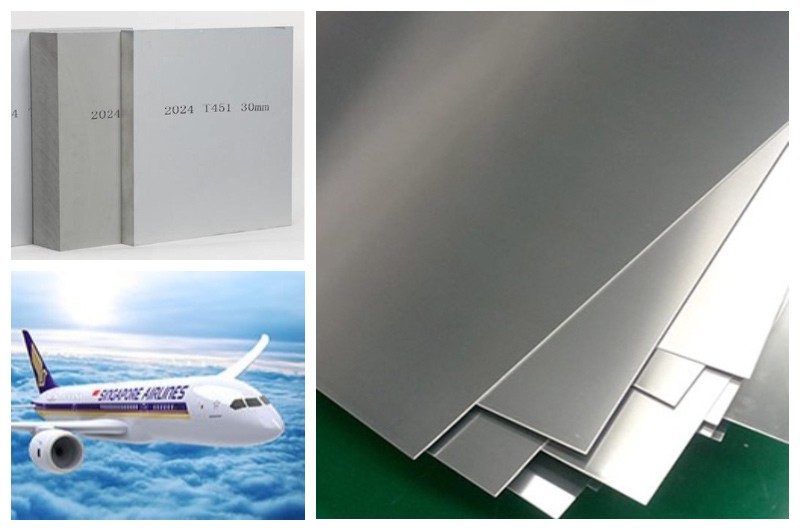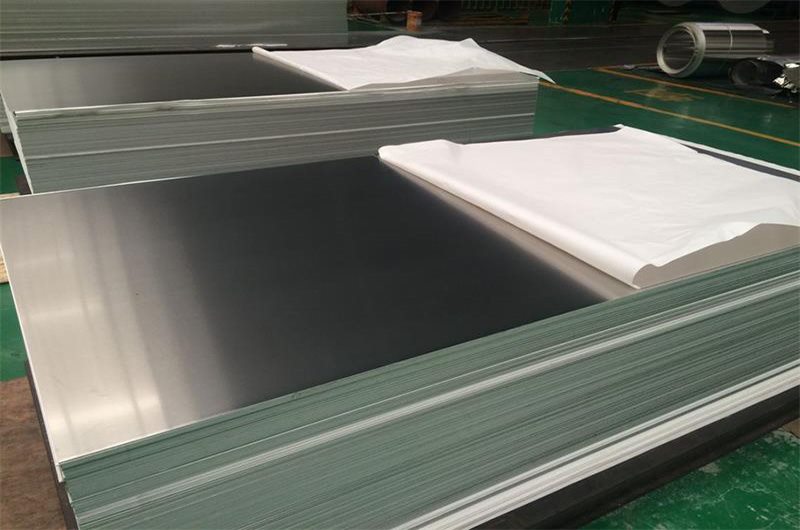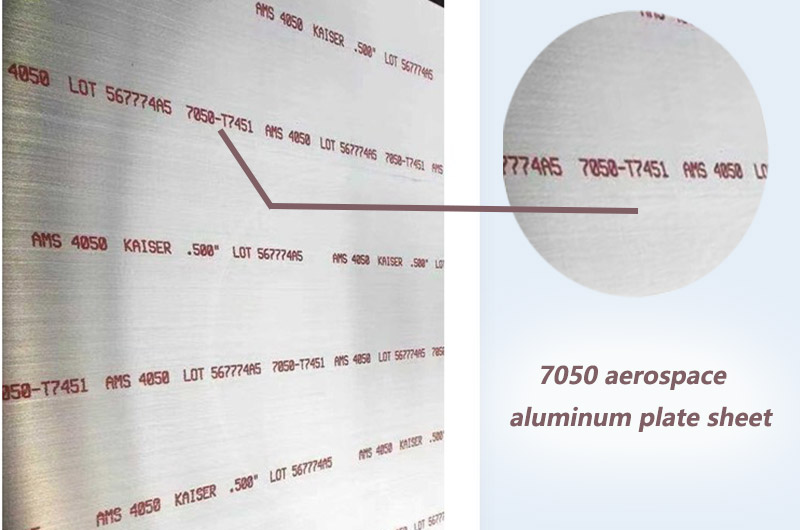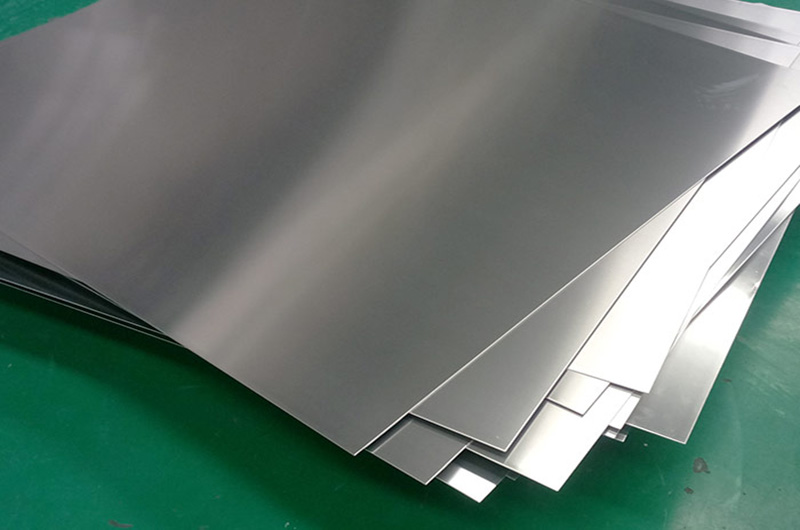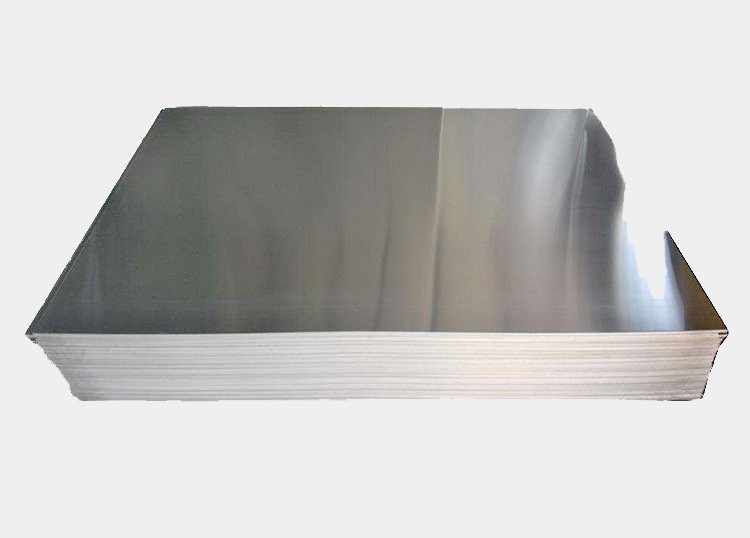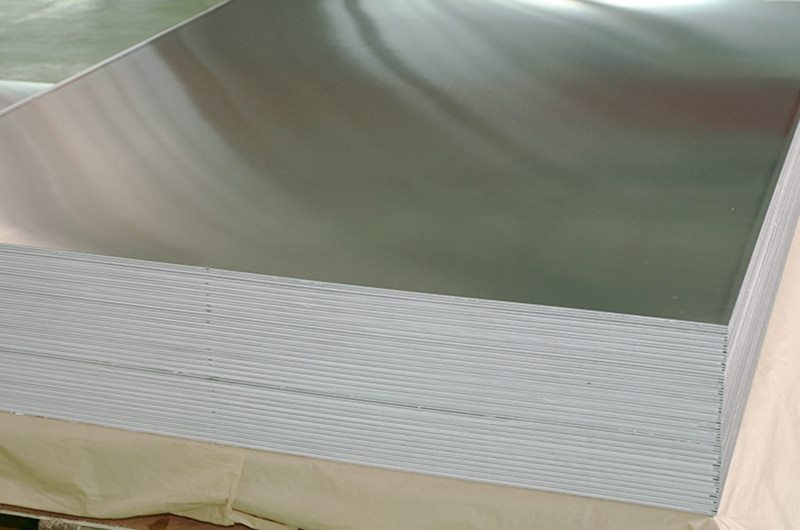- 7075 7475 aluminum plate for aircraft fuselage and wing
- Wings and spars
- Bulkheads and warehouse walls
- Body skin and coating
- Engine components
- Landing gear
- Connectors and bolts
Aviation aluminum alloy is the backbone material for the manufacturing of aircraft and aerospace vehicles. As contemporary aircraft design and manufacturing continue to improve flight performance, payload, fuel consumption, service life, and safety and reliability requirements, increasingly higher requirements are placed on the comprehensive performance and reduction effects of aluminum alloy structures.
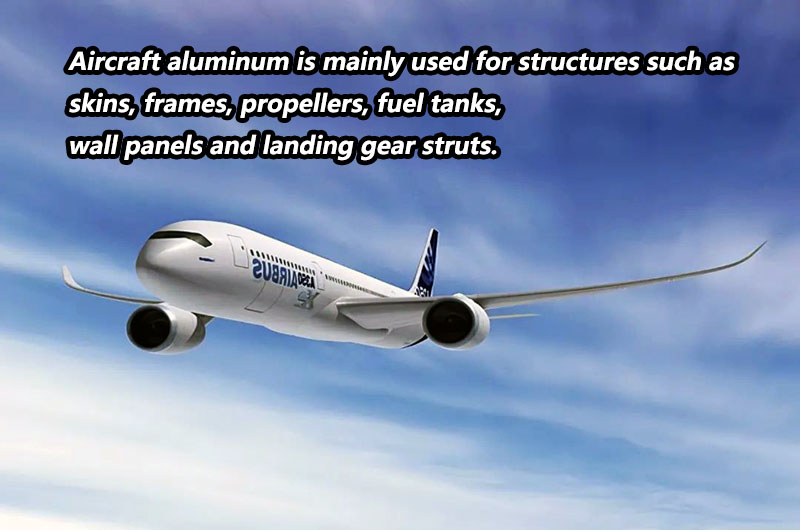
Aluminum alloys are mainly used as structural materials on aircraft, such as skins, frames, propellers, fuel tanks, wall panels and landing gear struts.
Aluminum is used as the primary propellant in the space shuttle's solid rocket booster engines because aluminum has a high volumetric energy density and is difficult to accidentally ignite.
Aviation aluminum alloy is a lightweight and high-strength metal material widely used in the aviation industry. Its specific application parts involve various components of the aircraft. The following are the detailed application parts of aviation aluminum alloys on aircraft:
7075 7475 aluminum plate for aircraft fuselage and wing
Fuselage structure: Aviation aluminum alloy is mainly used to manufacture the fuselage structure of aircraft, including fuselage shells, wings, horizontal and vertical tails and other parts. These parts require materials with sufficient strength and lightweight to ensure the overall performance and fuel efficiency of the aircraft.
- Aluminum alloy type: 7 series aluminum alloy, such as 7075, 7475, etc.
- Temper: T6 (age hardened) is a common choice, offering superior strength and hardness.
Wings and spars
Aerospace aluminum alloys dominate the manufacture of wings and spars. Due to their high strength and corrosion resistance, these parts are able to withstand various forces and environmental conditions during flight, ensuring that the aircraft's structure is safe and reliable.
- Aluminum alloy type: 2 series, 6 series aluminum alloy, such as 2024, 6061, etc.
- Temper: T6 is often used to provide the required strength and hardness.
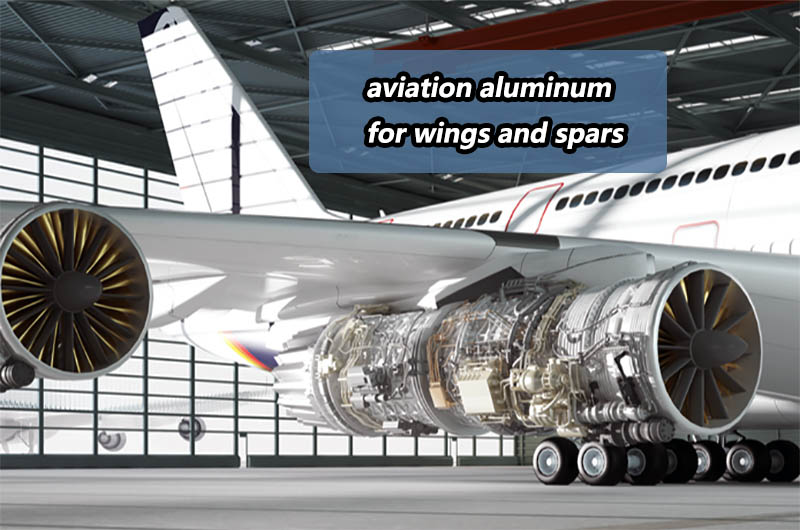
Bulkheads and warehouse walls
Bulkheads and bin walls are isolation structures inside the aircraft that are used to separate different cabins and cargo bins. The application of aviation aluminum alloys in these parts can provide sufficient protection and structural support to ensure the safety of passengers and cargo.
- Aluminum alloy type: 2 series, 5 series aluminum alloy, such as 2024, 5083, etc.
- Temper: O (annealed) or H111 (annealed and rolled) and other states, with good formability and corrosion resistance.
Body skin and coating
Aviation aluminum alloy is often used to manufacture the skin of aircraft, and can be surface-coated to increase corrosion resistance and improve appearance. This helps protect the aircraft from the outside environment while improving its overall appearance and aerodynamic performance.
- Aluminum alloy type: 7 series aluminum alloy, such as 7075.
- Temper: T6 condition to provide strength and hardness, while can be externally coated for added corrosion resistance.
Engine components
Aviation aluminum alloys are also used to manufacture some engine components, such as casings and support structures. These parts have high requirements for material strength and high temperature resistance, and aviation aluminum alloys can meet these requirements.
- Aluminum alloy type: 2 series, 7 series aluminum alloy, such as 2024, 7075, etc.
- Temper: T3 (age softening) to T6 state, depending on the required strength and high temperature resistance.
Landing gear
The landing gear of an aircraft is a key part that supports the aircraft to withstand huge loads when traveling on the ground and taking off and landing. Aviation aluminum alloys are widely used in the manufacture of landing gear to ensure their strength and durability.
- Aluminum alloy type: 7 series aluminum alloy, such as 7050.
- Temper: T6 state to provide high strength and hardness.
Connectors and bolts
Aviation aluminum alloys are also used to manufacture connectors and bolts for aircraft. These small but vital components need to have sufficient strength and durability to ensure a secure connection throughout the aircraft structure.
- Aluminum alloy type: 2 series, 7 series aluminum alloy, such as 2024, 7075, etc.
- Temper: T6 state, usually hardened to ensure sufficient strength.
Note that specific options may vary by manufacturer, aircraft model and design requirements. Therefore, in actual applications, engineers will choose the appropriate aluminum alloy and Temper according to specific needs.
In general, aviation aluminum alloys play an irreplaceable role in aircraft manufacturing, and their application in different parts ensures the safety, lightweight and high performance of aircraft.
Whether designing commercial aircraft or building sophisticated space shuttles, aluminum alloys are vital materials.
Aluminum alloys are most commonly used in the manufacture of fuselages, wings and support structures, bringing a range of benefits to aircraft and space flight engineering. Aerospace aluminum alloys are used to handle the sub-zero temperature conditions encountered in the cryogenic vacuum of space.
On the other hand, aluminum alloys used in aircraft manufacturing offer durability and resistance to various types of corrosion. The high stability of these alloys makes them ideal for use in mechanical components that also benefit from aluminum's high electrical conductivity.
Large-size aluminum alloy materials are processed by CNC milling to form integral aluminum alloy structural parts, replacing the traditional combined structural parts assembled from multiple aluminum alloy parts. This not only achieves significant weight reduction of structural parts and improves reliability during service, but also It can also reduce the aircraft assembly process and reduce manufacturing costs.
Informations you may be interested in:

